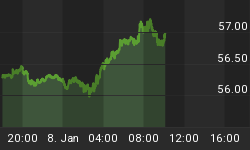A composite indicator constructed from the trends in yields on the 10 year Treasury bond, gold and crude oil suggests that inflationary pressures are extreme and starting to rollover. See figure 1 a weekly chart of the SP500 with the indicator in the lower panel.
Figure 1. SP500/ weekly
The unstated goal of Federal Reserve monetary policy is to re-inflate the economy and the stock market. Prior market interventions have been successful at stemming the deflationary cycle and juicing the "risk on" trade. This is normally seen after the equity markets sold off. It is at this point that the Federal Reserve would step in with the announcement of a new asset purchase program. Note how the indicator either anticipated the market sell off or went lower as prices headed lower. In essence, this indicator has become a measure of the Fed's success at inflating the economy and stock markets.
For much of the year, I have contended that the Fed is losing the battle to re-inflate the economy as the indicator has failed to move to an extreme zone. The drop in gold, the global recession, and the drop in TIPS all smell of deflation, which is not what the Federal Reserve wants. However, with gold prices stabilizing, the indicator has moved into the extreme zone suggesting that the Fed has been successful in inflating the economy and equity markets.
So what's next? It appears that the Fed's efforts can only go so far as the indicator rolls over and so do equity prices. Historically, going back to 1973, such extremes in the indicator have been a headwind for the equity markets, and I believe we can easily make that argument here in the New Normal. I think the bigger question remains: when and if the indicator rolls over, how is the Federal Reserve going to stem the deflationary tide with equity markets at their highs?
Want more TacticalBeta? See our pricing chart and upgrade today. Get Started Now
















